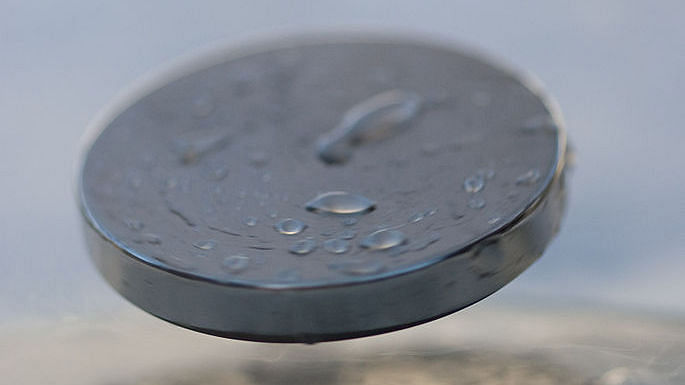Bengaluru: Researchers from the Indian Institute of Science (IISc), Bengaluru, have reiterated their promising, if controversial, discovery of superconductivity at room temperature, with eight more researchers backing the finding originally put forth by a team of two last year.
The team of 10 posted a preprint of their paper on arXiv, an open repository where peers discuss academic research, last week, but it is yet to be peer-reviewed or published in any scientific journal.
The ‘holy grail of physics’
When it first came out last year, the study created quite a stir in scientific circles around the world because of its colossal import: Superconductivity is a phenomenon where a material conducts electricity with zero to negligible resistance and loss, which means devices built with superconductors tend to be extremely efficient and entail large savings in both energy and costs.
Currently, superconductivity can only be achieved at temperatures far below zero, in processes that are too expensive for wider application.
Superconductivity at room temperature is thus believed to be the holy grail for modern physicists, and when two IISc researchers, Anshu Pandey and Dev Kumar Thapa, claimed in 2018 that they had achieved it, the world took note.
They made the claim in a preprint, again posted on arXiv, but a US physicist named Brian Skinner soon pointed out certain inconsistencies in a viral Twitter thread.
Skinner said he had noticed that two different kinds of data in the study showed identical noise patterns: Since noise — data that isn’t supposed to be produced by the set-up for an experiment, and is thus to be disregarded — is always random, it is usually nearly impossible to exactly duplicate it with varying parameters.
This, Skinner suggested, meant the team had either miscalculated or misinterpreted their results.
There was also a host of intrigue as Skinner pointed out that an Indian researcher who had aired his concerns about the paper had received a purported email from a senior, asking him not to criticise the study. As it turns out, the email, which originated from a heavily-encrypted Switzerland-based service, was from an impostor.
However, all talk of this paper died down over the subsequent months.
The paper, which had been submitted to the reputed science journal Nature, never got published, possibly failing the peer-review process or having been withdrawn in light of the questions raised about the accuracy of data.
Also read: Why the physics community has lost interest in breakthrough discovery
Questions & clarifications
Spearheaded by eight additional authors, the revised paper makes a few modifications in the original study, though the material used is the same: Silver nanoparticles embedded in a gold matrix. Individually, neither metal exhibits superconductivity, but together, they seem to do so, the study says.
The modifications include a higher number of samples, 125 against the 33 used in the 2018 study, as well as more measurements. The revised study also includes more details about the methods used, and exhibits vastly-improved results, with researchers claiming the material’s resistance dropped up to 100 times more than seen in the 2018 study.
According to the researchers, of 125 samples studied, 10 were found to exhibit symptoms of superconductivity.
The other 115, the researchers claim, were contaminated due to exposure to oxygen “during preparation and transfer”.
Researchers not connected with the new study have raised some concerns about it. Pratap Raychaudhuri of the Tata Institute of Fundamental Research (TIFR- Mumbai) told The Hindu
that two properties of a material that need to drop for superconductivity — resistance and mutual inductance — seem to do so unusually at different temperatures in the study.
However, study co-author Arindam Ghosh clarified in the same The Hindu piece that, while they didn’t know the reason behind this occurrence, they had observed it in other materials in the past.
Also, the same noise repetition was found to be present in the revised study, but when the material was replaced by lead, the noise disappeared, the researchers write.
Skinner flagged this in an interview with TheWire, telling the publication that he found it strange the team used the same data set from the previous paper.
Could be a tremendous breakthrough
The paper has been submitted to a journal, though it’s not known which one. If it is accepted, this could potentially be one of the biggest findings in physics to ever come out of India.
Currently, sub-zero superconductors are used in research and medicine, where it is employed in MRI machines.
Achieving room-temperature superconductivity could revolutionalise our lives by paving the way for more cost-effective technology like magnetic-levitation trains, besides making regular appliances like refrigerators considerably more energy-efficient.
Also read: This young Bengaluru entrepreneur is teaching space science & tech to India and the world




This is not science at the best and public relation exercise at the worst. Superconductivity by definition is zero resistance to current. The diamagnetism ALONE is not a proof of superconductivity. This types of half baked experiments make people lose trust in so called scientific discovery. This is a disservice to science. I wish IISC would wait before rushing to the media without complete sets of data.
If you think my suggestion is proper, I would suggest the team of researchers to demonstrate to scientists in India and abroad to gain immediate support from wider community. M. A. Padmanabha Rao,PhD(AIIMS). https://www.researchgate.net/profile/Padmanabha_Rao2